Ahh, our favourite time of year is upon us. The autumn air is crisp, the leaves are falling in heaps of red and yellow, and there are pumpkins on every street. It’s no wonder that here at the Haunted Walk we are obsessed with all things Halloween. We take our roles as experts in all things haunted very seriously and during October we go all out. If you want to celebrate Halloween the Haunted Walk way this spooky season, then this is the perfect guide for you. Read on…if you dare!
To really immerse yourself in the spirit of Halloween, one must learn a little about its history! We have always taken great pride in ensuring our ghost stories can be backed up by real-life history and true personal experiences, so here’s a little about where this spook-tastic holiday came from.
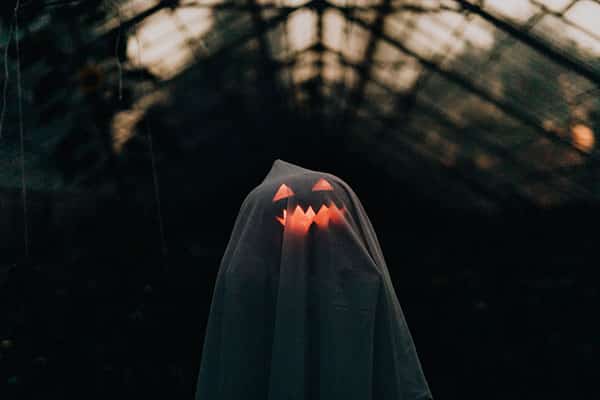
A Heaping of Halloween History
Halloween, as we know it here in Canada, has its roots in the ancient Celtic festival of Samhain. Despite its spelling, the proper way to say the festival’s name is Sow-In and it can be traced back about 2000 years ago. The Celts followed a different calendar than the one we commonly use today. Their New Year was celebrated on November 1st–not January 1st, as it marked the end of the summer and harvest seasons. The dark, cold winter that would follow was a time often associated with death. Believing that the boundary between the worlds of the living and the dead was the weakest on the evening before the New Year and the ghosts of the dead could visit the earth then, the Celts celebrated Samhain on the 31st night of October.
The Celts would have also believed that the weakening of the boundary between the living and dead would be the reason for any crop troubles they may have been having and they thought the presence of the ghostly spirits who had slipped through to the side of the living made it easier for the Celtic Priests or Druids to predict the future. Many people would rely heavily on the predictions to provide them with hope and comfort during the long winter ahead. The Druids would build large, sacred bonfires where the towns folk would gather to burn crops and animal sacrifices to the Celtic deities, often dressing up in costumes of animal skins themselves. They would spend time around the fire attempting to tell each other’s fortunes much like the Druids would. At the end of the celebration, the sacred bonfire’s flame was used to reignite their own fires at home and ensure they were protected through the winter.
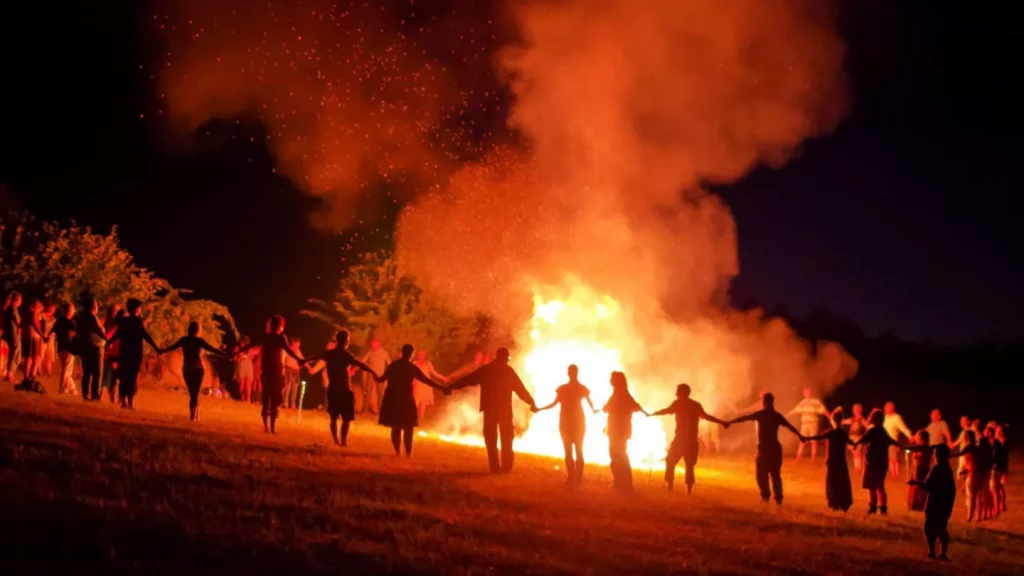

When the Roman Empire had conquered most of the Celtic territory around 43 A.D., the traditional Samhain festivities had been combined with Roman traditions like Feralia, a day in which the passing of the dead was commemorated.
In 609 A.D., Pope Boniface IV established All Martyrs Day (later All Saints Day) which was observed until November 1st. This is when the Christian influence had taken hold over the older Celtic-rooted traditions and it is believed they had the intention to replace the Celtic festival completely. Even though they were in favour of moving towards a church-sanctioned holiday, the Christian All Saints Day was celebrated in a similar fashion to Samhain. They lit large bonfires, threw parades, and dressed in costumes depicting Christian symbology like angels and devils. Among its many names, the holiday was also referred to as All-hallows or All-hallowman which eventually evolved into All-Hallows Eve and then Halloween as it is most often called today.
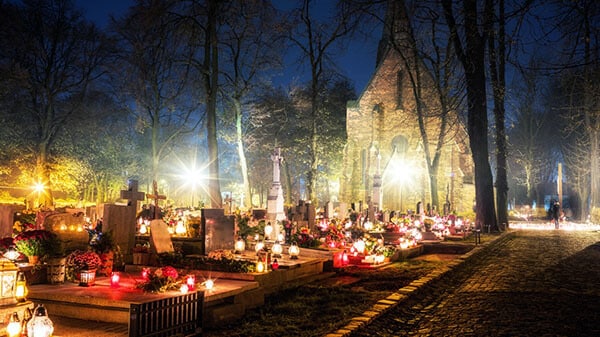
Ghost Tours & Paranormal Adventures
Modren Mischief
When Halloween reached across the ocean to the folks living in North America, it was much more common in Maryland and the southern colonies as the rigid Protestant beliefs in colonial New England opposed it. Over time, the beliefs of different groups meshed and the emergence of our modern “Halloween” began. The very first celebrations included public events celebrating the harvest as well the sharing of ghost stories and tales of the dead. Sounds like the perfect holiday for a bunch of ghost story-telling tour guides!
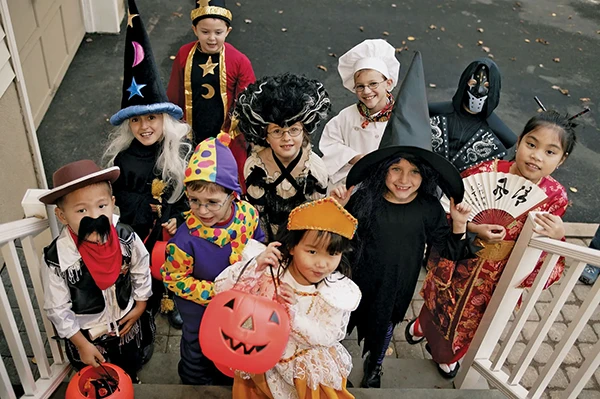
Ghosts and Goblins and Ghouls, Oh My!
Now that you know a little more about the origins of Halloween, where did all these creatures we associate with the holiday come from? Walking down the aisle of any store’s seasonal section this time of year you are sure to find decor involving a multitude of spooky and supernatural beings. Witches, werewolves, ghosts, goblins, zombies, and so much more have become synonymous with Halloween, but monster-like figures have been involved in celebrations dating back to the Celtic times, although they were a little different than what you tend to see today.
Beginning with the blood-sucking Vampires, these pesky biters have long been associated with Halloween. Though there are many depictions of vampires throughout the world, the ones we tend to see around this time of year have fangs to drink human blood, hate garlic, and can luckily be killed by a good old-fashioned wooden stake through the heart. It is suspected that these sorts of vampires evolved from a few different European traditions and beliefs. Mostly centred around the fear that those who have died could come back to harm the living, these beliefs stemmed from a misunderstanding of how bodies actually decompose. Once a person has died, their skin shrinks causing teeth, fingernails, and hair to appear as if they’ve grown longer. As the internal organs break down, bodies can ooze dark fluids out of the nose and mouth making it look like they have recently had a nice big drink of a poor unsuspecting, living human’s blood.
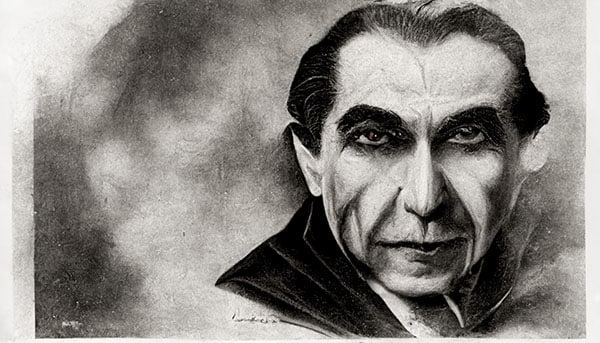
Where there is a vampire on Halloween you are sure to see a witch nearby. Witches, in this case, the green ones with bubbling cauldrons and pointy black hats, are almost solely associated with Halloween. It’s by far one of the most popular costumes and has been since the beginning of modern-day Halloween. Witches became a symbol of Halloween back when the Christian religion began influencing the season’s traditions. The Church twisted witches into something horrible and fearsome even though witches had long been wise healers in tune with nature and nothing to be feared at all. Unfortunately, the witch hysteria that caused the death of many only propagated the negative view people had of witches leading the Halloween costumes to depict what many see as ugly and scary.
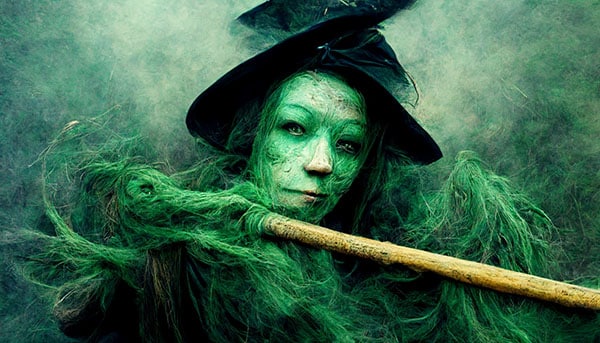
Our favourite monsters associated with Halloween by default are the ghosts! Like other supernatural creatures, ghosts come in many different forms. Halloween ghosts typically fall under the “white sheet with black hole eyes” description which is often more cute than creepy. Early literature references ghosts as wearing all sorts of different clothing types, but the easiest way to differentiate living characters from the dead ones was to portray the ghosts in their burial shrouds. Of course, this just ends up looking like the average hotel bed sheet, but who are we to judge as we’ve made the sheet ghost the face of Haunted Walks! Before the nineteenth century, it was a lot more common for folks to be buried in shrouds rather than expensive coffins and the sheet ghost to this day is one of the cheapest Halloween costumes out there.
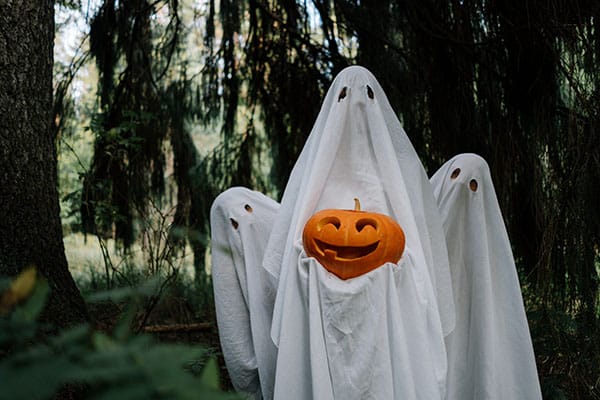
Spooky Shenanigans
No Halloween season is complete without all the fun traditions and activities associated with it. Whether you enjoy getting lost in the thickest of corn mazes, or ruining your teeth on delicious gooey caramel apples, there are so many activities that make this season special. Dare we say that going on a Haunted Walk definitely tops the list?
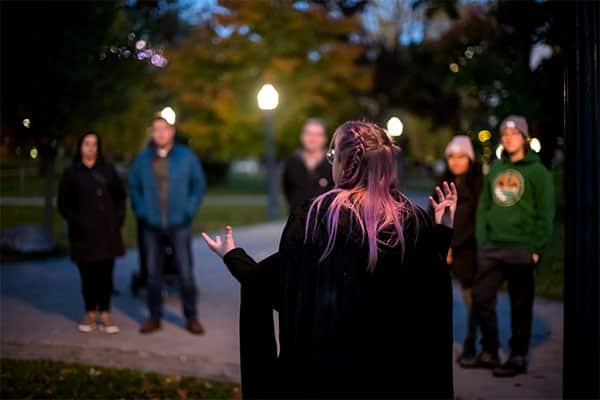
Perhaps the most popular Halloween activity is the carving of pumpkins. From simple triangles to elaborate designs, almost every porch during the month of October has at least one carved pumpkin. The origins of the Jack-o-Lantern come from Ireland where faces would be carved into turnips rather than pumpkins. This stems from an old Irish Legend about a man named Stingy Jack. In the spirit of Halloween fun, we’ll let this poem tell you the tale (written & read by Richelle Gallant):
Even if you aren’t the type to celebrate Halloween, there’s nothing like scoring some of those perfectly portioned tiny candies that only come out on store shelves during this time of year. Of course, that’s why children tend to love Halloween so much, they get loads of it for free! There are in fact three theories floating around as to where the origin of “trick-or-treating” came from.
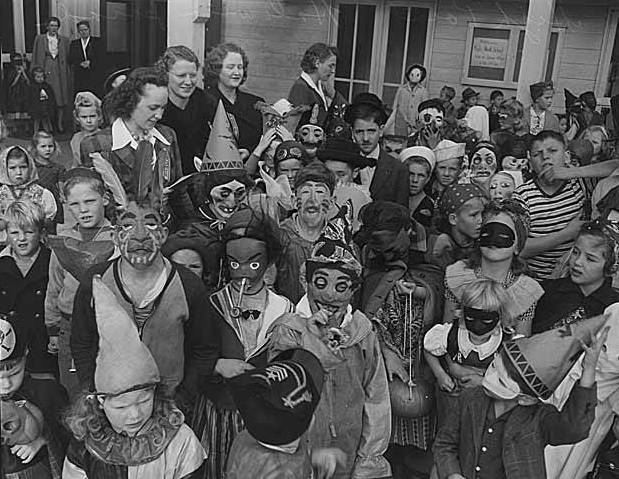
The first explains that in the early days of Samhain in Ireland, folks would leave out food in order to appease the spirits that had slipped through the boundary of life and death and got lost wandering the Earth. As years went on, people began to dress up in costumes mimicking these spirits and exchanged offerings amongst themselves.
Another theory attempts to explain where the idea of going door to door in the hopes of candy began. In Scotland, the practice of guising or souling became popular in the middle ages. It was often children and poor adults who would go around collecting food and money from homes in exchange for prayers for the dead on All Souls Day. Eventually, the prayers were phased out when the festivities became more secular and songs, jokes, and “tricks” took their place.
The final theory presents the possibility that modern trick-or-treating comes from a German-American tradition known as “belsnickeling”. Children would make their way through the neighbourhood going door to door as in the other theories, but they would dress up in costumes and make the adults answering the door attempt to guess who was underneath the disguise. In some versions of belsnickeling, the children would be rewarded with little prizes if no one was able to guess their correct identity.
Haunted Walk Top 5’s
No guide to a spook-tastic Halloween is complete without some suggestions on some awesome movies, snacks, and other fun activities to partake in during this season! With the help of our amazing tour guides across all three of our cities, we’ve compiled what we think are the ultimate “Top 5” lists for Halloween. We hope you enjoy and have a chilling Halloween!
Movies
- Fear Street (Netflix)
- Halloweentown (Disney +)
- Over the Garden Wall (Disney +)
- It’s The Great Pumpkin, Charlie Brown (Apple TV)
- Addams Family Values (Netflix)
Snacks
- Candy & Caramel Apples
- Twizzlers
- Sour Patch Kids
- Coffee Crisp
- Mars
Books
- The Graveyard Book – Neil Gaiman
- The Haunting of Hill House – Shirley Jackson
- Carrie – Stephen King
- Practical Magic – Alice Hoffman
- Something Wicked This Way Comes – Ray Bradbury
P.S. Our Haunted Walks are running right through the Halloween season and some even into November! Happy Haunting!
Written and Researched By:
Richelle Gallant (Haunted Walk Tour Guide and Spooky Content Creator)
Sources:
https://www.history.com/topics/halloween/history-of-halloween
https://www.history.com/topics/holidays/samhain
https://www.nationalgeographic.com/science/article/vampires-europe-new-england-halloween/
https://www.smithsonianmag.com/arts-culture/the-witches-of-halloween-past-94494043/
https://www.bbc.com/news/uk-scotland-37822022
https://www.immortalperfumes.com/blog/witchesandhalloween
https://www.thedailybeast.com/who-invented-the-bedsheet-ghost
https://www.kqed.org/arts/13904118/halloween-bedsheet-ghost-history-spirits-burial-shroud
https://blogs.loc.gov/headlinesandheroes/2021/10/the-origins-of-halloween-traditions/
